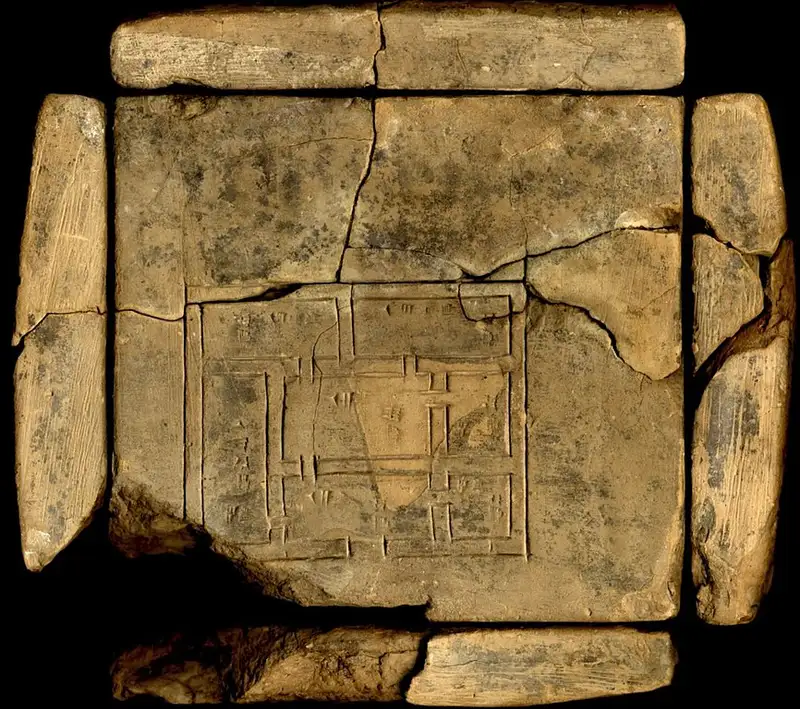Introduction
This remarkable Sumerian house plan, dating back approximately 5,000 years, offers an intriguing insight into the architectural sophistication of the Ur III period (circa 2112–2004 BCE). The plan was crafted on a clay tablet discovered in the ancient city of Umma, showcasing the ingenuity of early urban planning and the lifestyle of its inhabitants.
Architectural Features
Central Courtyard Design
The house plan features a residential structure thoughtfully designed around a central courtyard—an essential characteristic of Sumerian urban planning. This design not only provided a communal space for the family but also enhanced ventilation and natural light within the dwelling, demonstrating a keen understanding of environmental factors in architecture.

Use of Cubits for Measurements
The tablet details dimensions measured in cubits, reflecting the importance of standardized measurements in ancient construction. The consistent use of cubits likely corresponds to the sizes of individual rooms, indicating a well-organized living space that catered to the needs of its inhabitants. This systematic approach to building design suggests a level of sophistication that was advanced for its time.
Wall and Doorway Representation
The design employs parallel lines to denote walls, while doorways are carefully marked, providing a detailed representation of the house’s layout. This meticulous documentation illustrates not only the architectural skills of the Sumerians but also their ability to plan functional living spaces effectively.

Significance of the House Plan
What makes this artifact particularly significant is its demonstration of the advanced architectural techniques and urban planning concepts of the Sumerians. During the Ur III period, Sumerians were not only skilled builders but also pioneers in creating complex social structures that required efficient living environments. The house plan serves as evidence of their innovative spirit and practical problem-solving abilities.
Insights into Daily Life
This ancient house plan enriches our understanding of daily life in one of the world’s earliest civilizations. It offers a glimpse into the social organization, family structures, and daily activities of the Sumerians. The design reflects a society that valued community and functionality in its living spaces.
Conclusion
Currently housed in the Vorderasiatisches Museum in Berlin, the clay tablet continues to fascinate archaeologists and historians alike. It sheds light on the cultural and architectural legacy of ancient Sumer, serving as a testament to the ingenuity and sophistication of a civilization that laid the foundations for urban life as we know it today. Through this remarkable artifact, we can appreciate the enduring influence of Sumerian architecture on future generations and the rich tapestry of human history.

